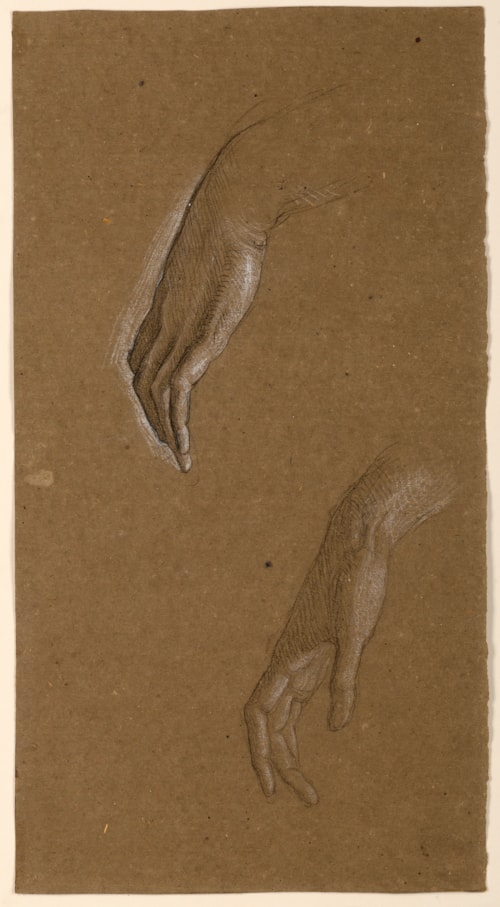
Sir William Blake RICHMOND
London 1842 - London 1924
Biography
The eighth child and second son of the portrait painter George Richmond, William Blake Richmond was named after his father’s great idol and mentor William Blake, while his godfather was the elder Richmond’s close friend Samuel Palmer. William entered the Royal Academy School in 1857, and in 1860 made the first of several visits to Italy. The following year he began exhibiting at the Royal Academy. Between 1866 and 1869 Richmond lived and worked in Rome, where he met the Italian landscape painter Giovanni (‘Nino’) Costa, whose studio on the Via Margutta had become a meeting place for English painters visiting the city. Costa became the head of an informal group of English landscapists - including Richmond, George Howard and Matthew Ridley Corbet - who called themselves ‘The Etruscans’, and who found inspiration in sketching trips into the Campagna, guided and encouraged by Costa. Although Richmond’s lifelong passion for landscape is reflected in the informal oil sketches that remained a constant production of his later career, it was as a portrait painter that he made his mark on his return to England.
One of the finest portrait painters of the Aesthetic movement, Richmond received numerous significant commissions for portraits, notably of William Gladstone and his niece Lady Frederick Cavendish and nephew Lord Lyttelton, Charles Darwin, the Duke of Argyll and the Princess of Wales, among others. He also produced several more informal portraits of such friends as William Holman Hunt, Robert Louis Stevenson, William Morris and Robert Browning. Demand for his portraits continued throughout his career, and his success as a fashionable portrait painter earned him considerable renown. (Despite these accomplishments, the artist seems to have preferred painting large mythological subject pictures or small landscape oil sketches. As he later wrote in his unpublished memoirs, ‘Portrait painting practised exclusively even for a brief period has always been irksome to me; it occupies only half one’s energies and emotions. To attain a ‘good likeness’ has always been difficult for me.’) Richmond exhibited at both the Royal Academy and the newly-established Grosvenor Gallery, and in 1879 was appointed Slade Professor of Art at Oxford, where he taught until 1883. In 1888 he was elected an Associate Member of the Royal Academy, becoming a full Academician in 1893.
Richmond was also active both as a sculptor and designer of stained-glass windows, while throughout most of the 1890s he was engaged on the decoration of the apse and choir of St. Paul’s Cathedral in London with mosaics; arguably the most significant mosaic commission ever received in England. Reflecting the artist’s close study of Byzantine mosiacs in Rome, Florence, Ravenna and Palermo, the mosaic decoration of St. Paul’s (for which Richmond also designed the stained-glass windows, lost or destroyed in the Second World War) was begun in 1891 and largely completed by 1896, although the last elements were not finished until 1904. Richmond was knighted in 1897, and three years later a major retrospective exhibition of his paintings, drawings and sculptures, numbering almost five hundred works, was held at the New Gallery in London.


